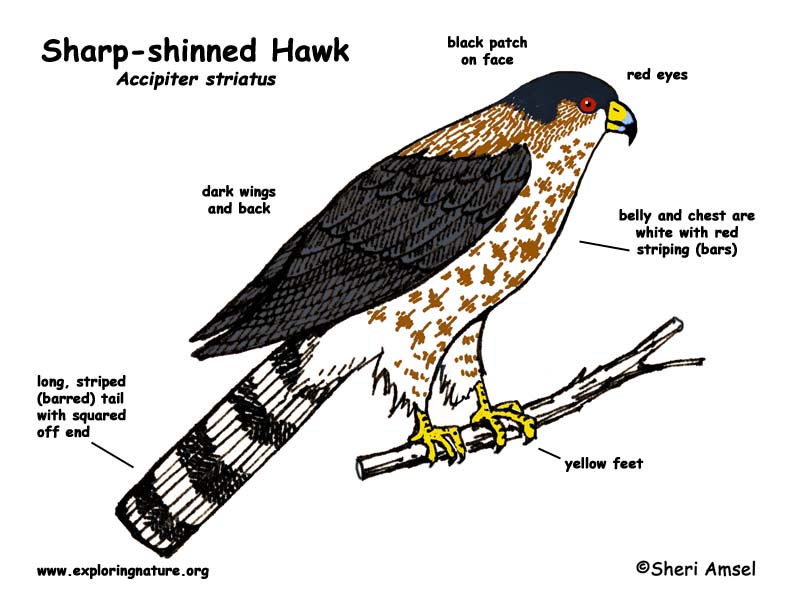

They spend the winter along the coast of Alaska, down through southern Canada and the U.S. They spend the summer breeding from Alaska, across most of Canada down into the eastern and western forest of the U.S. and into Mexico and Central America. Not found on the mid-western plains.
They nest mostly in coniferous forests, but can winter in many places, including around homes (and bird feeders) and even cities.
They are small hawks, reaching only about 13 inches. They have a dark back and wings and a red and white striped (barred) belly and chest. They have red eyes and yellow feet. They have a long, striped (barred) tail with a squared off end.
Often watches bird feeders to prey on feeding birds.
They eat mostly birds but will also take small mammals and insects.
They build a nest of twigs under cover in a dense tree. Females lay 3-8 pale blue eggs that can be spotted.
Kingdom: Animalia
Phylum: Chordata
Subphylum: Vetebrata
Class: Aves
Order: Accipitriformes
Family: Accipitridae
Genus: Accipiter
Species: A. striatus
When you research information you must cite the reference. Citing for websites is different from citing from books, magazines and periodicals. The style of citing shown here is from the MLA Style Citations (Modern Language Association).
When citing a WEBSITE the general format is as follows.
Author Last Name, First Name(s). "Title: Subtitle of Part of Web Page, if appropriate." Title: Subtitle: Section of Page if appropriate. Sponsoring/Publishing Agency, If Given. Additional significant descriptive information. Date of Electronic Publication or other Date, such as Last Updated. Day Month Year of access < URL >.
Amsel, Sheri. "Hawk (Sharp-shinned)" Exploring Nature Educational Resource ©2005-2024. December 13, 2024
< http://www.exploringnature.org/db/view/176 >


